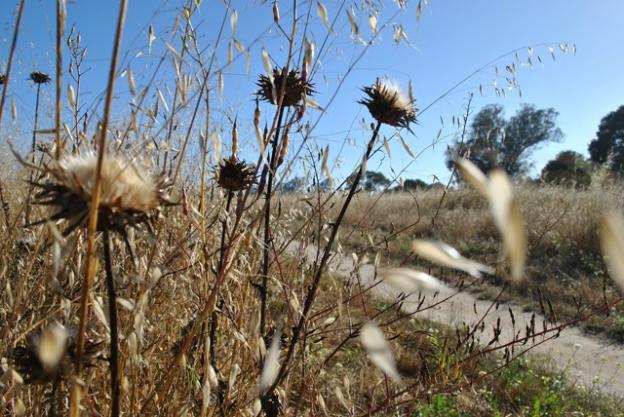For more than a decade, Arana Gulch was the site of a pitched battle over land use, with the city intent on creating a bicycle commuter route connecting the Eastside neighborhood of Santa Cruz with Live Oak (Broadway to Brommer Street). The plan was widely supported by bicyclists eager for a safer, scenic alternative to Soquel Avenue.
Because this habitat (“coastal terrace prairie” is the proper name for it) is among the most diverse and threatened in the temperate world, some members of the conservation community sought to protect the place, including the Santa Cruz tarplant, an endangered, native bloom of the sunflower family wiped out in the Bay Area and thought to be under steady threat of losing its toehold in Santa Cruz.
The controversial bike path finally met the approval of the California Coastal Commission in late 2011, and the path was completed in 2015. At that time the network of wheelchair-accessible trails was expanded. The bike path features a 340-foot "stress ribbon" bridge across Hagemann Gulch, a technology that allowed the bridge to be built without disturbing the gulch.
Until recently Arana Gulch was a dairy farm. After the farm sold in the 1980s, the local tarplant population dropped rapidly. Scientists cited a lack of disturbance as reason for the plant’s decline and have suggested a return to seasonal grazing—so don’t be surprised if you see a cow or goat munching away on invasive vegetation. The city also hosts educational tours through the preserve, led by the nearby Santa Cruz Museum of Natural History.
Wildlife keep a low profile but coyote and raccoon can be spotted here from time to time. The dense, leafy margins of the park also house a variety of bat species, veiled in the thick underbrush of blackberry vines, English ivy and French broom.
Back to Arana Gulch.













